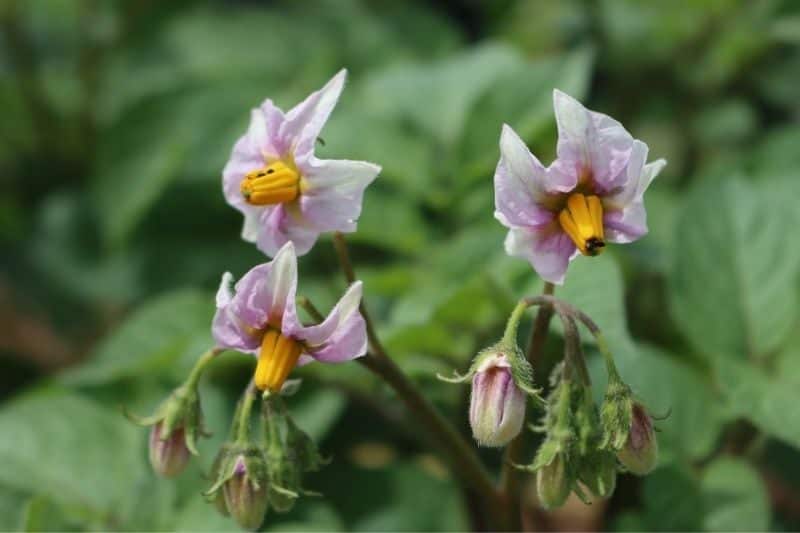Companion planting is an age-old gardening technique that can help protect plants and repel pests. Potatoes, for example, are good companions for these plants.
What is companion planting?
Companion planting is the gardening practice of growing plants in close proximity so that they can mutually benefit from each other. Vegetables and herbs get mixed and matched and intermingled to give each other a helping hand. This boost may be in the form of deterring pests, attracting pollinators and other beneficial insects, preventing disease, or promoting growth.
Where should I plant potatoes?
Potatoes need a sunny location in order to grow properly. Look for a garden site that receives at least six hours of sunlight a day. The soil your potatoes grow in should be well-drained and fertile. You can amend the soil by mixing compost or organic materials into the top few inches of soil prior to planting. When the soil is amended properly, potatoes do not need fertilizer throughout the growing season. If possible, do any soil amendments in the fall to give the nutrients time to spread throughout the soil.

Do I need to rotate my potato crop?
Yes, proper crop rotation is a key part of learning how to grow potatoes. Potatoes that are grown in the same location year after year are at a greater risk of developing diseases or pests that overwinter in the soil. Crop rotation also helps replenish nutrients in the soil.
Plant your potatoes in an area you grew greens such as cabbage, spinach, Brussels sprouts, lettuce, kale, or Asian greens the previous year. You can follow potatoes with root veggies such as carrots, beets, parsnips, radishes, or turnips.
What are the best companion plants for potatoes?
Potatoes grow well with a variety of plants. Some plants enhance the flavor of potatoes, others help restore nutrients back to the soil, while several deter pests. It’s easy to find good companion plants for potatoes as long as you know there are also a few plants that make poor companions. In general, the following plants are all well suited to sharing garden space with potato plants.
Plants that won’t compete for space with your growing potatoes:
- Lettuce
- Spinach
- Radish
- Green onions
- Marigolds
Plants that add nutrients back into the soil:
Potato companion plants that repel pests, attract beneficial insects, and ward off diseases:

What should I not plant near potatoes?
Avoid planting potatoes near other nightshade family members such as peppers, tomatoes, or eggplant. Nightshades can share bacterial and fungal diseases with each other, so you’ll want to keep them separated.
Celery does not do well near potatoes. When it is time to harvest potatoes, the celery will be at its peak growth, and you don’t want to disturb the roots when you are digging up your spuds!
You should also steer clear of planting carrots, dill, onions, pumpkins, cucumbers, turnips, and squash too close to your potatoes.







